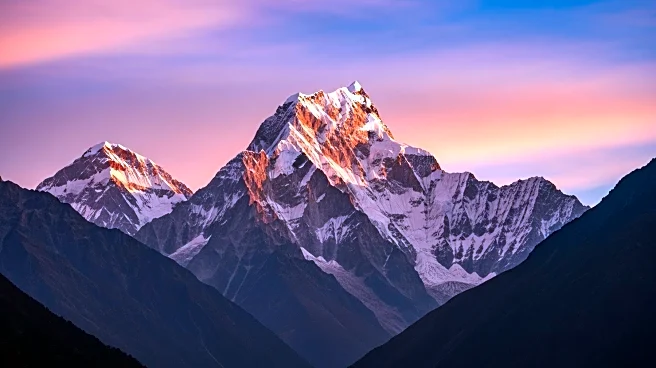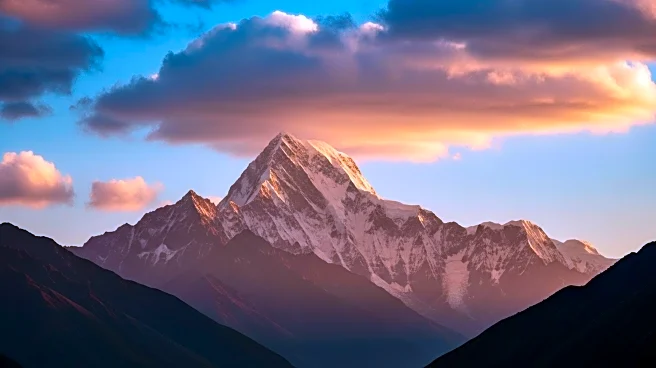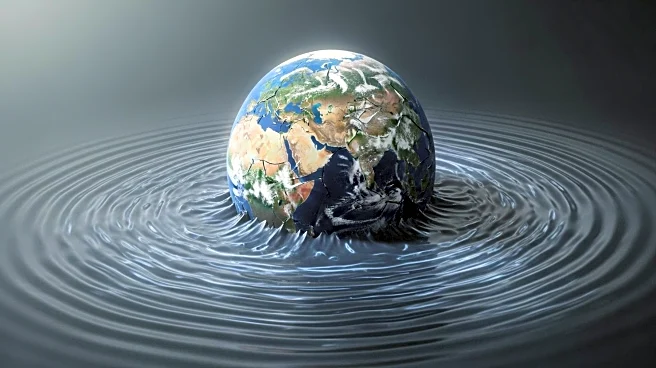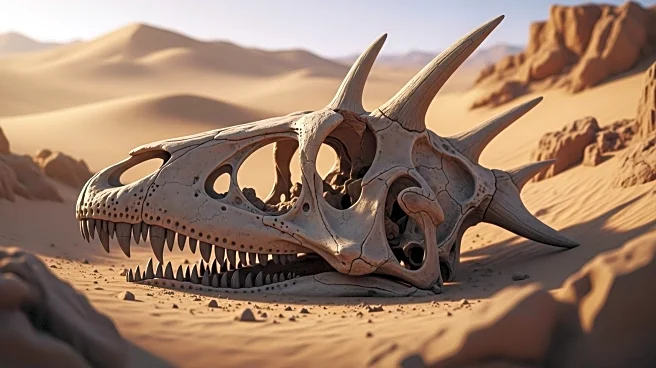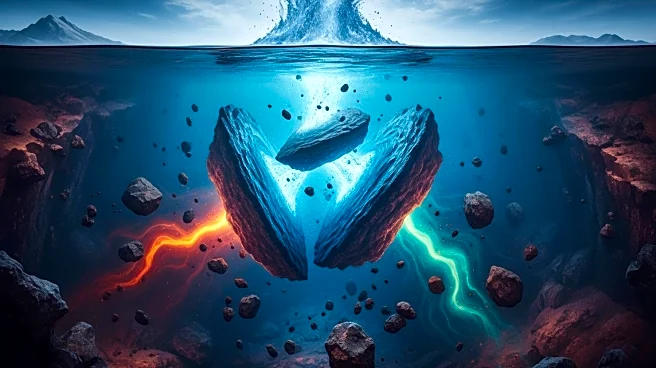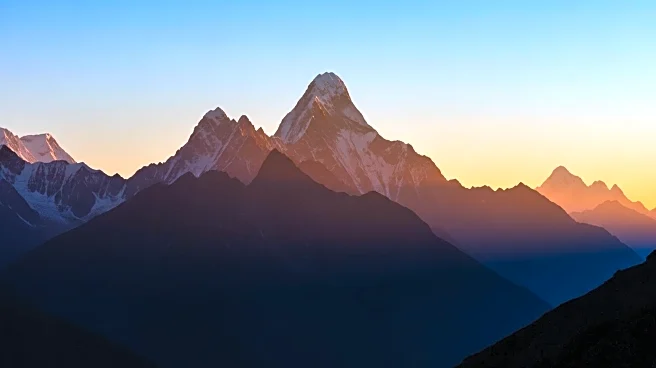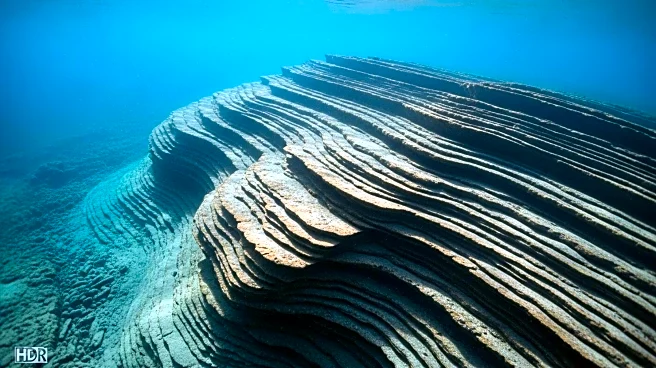What's Happening?
Recent research has challenged the century-old theory regarding the geological structure supporting the Himalayas. Traditionally, it was believed that the Himalayas were supported by a double-thickness crust resulting from the collision of the Indian and Asian tectonic plates. However, new findings suggest that a piece of mantle is sandwiched between the crusts, providing the necessary support for the mountain range. This discovery was made through computer simulations and seismic data analysis.
Why It's Important?
This new understanding of the Himalayan geology could have significant implications for geophysical research and our comprehension of mountain formation. It challenges long-standing geological models and provides a more accurate explanation of the region's tectonic dynamics. The findings may influence future studies on mountain building processes and the stability of the Earth's crust in tectonically active regions.
Beyond the Headlines
The study highlights the importance of questioning established scientific theories and the role of advanced technology in uncovering new insights. It also underscores the complexity of geological processes and the need for continuous research to refine our understanding of Earth's structure. The findings may inspire further exploration of other mountain ranges and tectonic boundaries worldwide.
